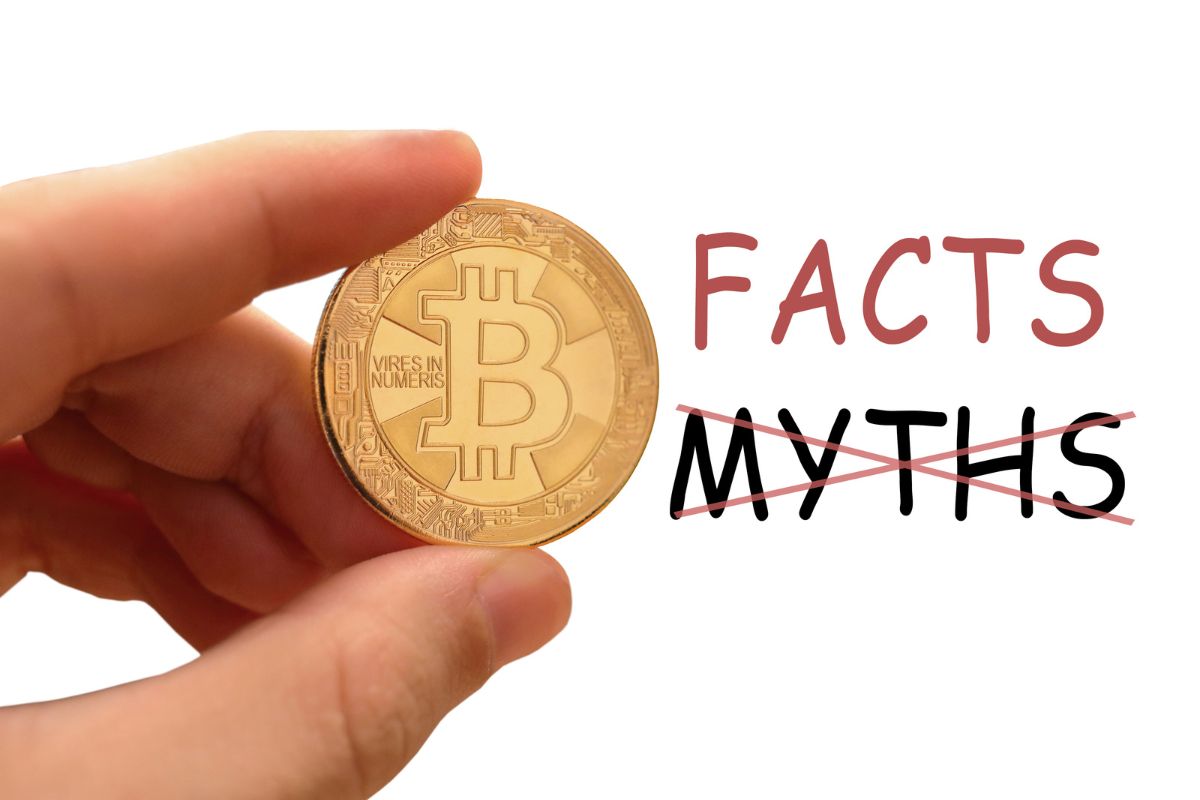The Truth Behind the 5 Most Popular Crypto Misconceptions
- August 17, 2022
- Jennifer Moore

The rising global adoption of cryptocurrencies has generated interest among citizens and governments alike. There are both proponents and detractors of digital assets in the current world. Countless people spread misinformation, often unwillingly, about crypto assets. This article will try to assimilate the 5 most popular misconceptions about digital assets, and uncover the truth lurking beneath.
Misconception #1: Digital Assets are solely used for Illegal Activities
There is a general conception that cryptocurrencies are mainly used for funding purchases across the Dark Web, money laundering, ransomware, and many more. The ground reality is however poles apart. A recent survey revealed that 57.6% of the world’s top 2050 companies are using crypto in at least one form or another, especially for cross-border settlements. Financial institutions have been the greatest adopter of digital assets. While crypto has been used by people and groups with nefarious intent, they represent just 0.34% of all crypto transactions as per Chainalysis. Government regulatory bodies are implementing strict enforcement laws to prevent money laundering through crypto.
Also Read: Crypto Predictions: How will Bitcoin and other Digital Assets Fare in 2030?
Misconception #2- There is no value in Digital Assets
Let us take the example of Bitcoin. In the famous Bitcoin Pizza Day incident, the valuation of 10,000 Bitcoins was equivalent to large slices of Papa John’s pizza, or $41. The initial value of Bitcoin during its 2009 launch was thousandths of a cent. Fast forward to 2021, Bitcoin reached an all-time high of $69,000 in November 2021, followed by market rectification to the current price of around $24000. The fluctuation in Bitcoin’s valuation reflects how the concept of value itself is subjective. Digital assets remain valuable to people optimistic about crypto’s future potential.
On the other hand, Ether is much less than Bitcoin. However, its unique blockchain ecosystem powers DeFi apps, NFTs, and other technological innovations as well. It is of great importance to blockchain development companies developing fintech products and services. On the other hand, global asset management groups like Galaxy Digital Holdings and Grayscale have over a billion dollars in crypto investments. The valuation fluctuates as per consumer sentiment, supply-demand, and other economic parameters.
Also Read: Blockchain Analytics Play An Important Role For The Growth of the Global Cryptosphere
Misconception #3: There are Security Concerns In Crypto
Blockchain is the underlying technology powering cryptocurrencies. It is one of the most prominent technical innovations of modern times. Thereafter, in use by business and government organizations across countless sectors, optimizing their performance. Blockchain favors decentralization, which plays a significant part in bolstering network security. Data once stored in blockchains are permanent and tamper-proof rendering them immutable. Crypto assets utilizing blockchain technology are secure and encrypted. The issues of scams and frauds arrive through poor storage in crypto wallets and exchange infrastructure.
Misconception #4: Digital Assets are Harmful to The Environment
There was considerable talk regarding the environmental concerns that stemmed from Bitcoin mining. The Proof of Work process is energy-intensive, and the rising popularity of bitcoins resulted in the growing use of its consensus mechanism that utilizes huge computational power to verify and authenticate transactions. Large mining farms have been consumption equivalent to small countries, leading to carbon emission concerns. However, many crypto assets utilize the Proof of Stake(PoS) mechanism, which utilizes far less energy. ETH is currently undergoing a change from PoW to PoS.
Also, almost 60% of the global mining consumption has switched to renewable sources according to the global Bitcoin mining council. They are in fact one of the main proponents of renewable energy generation. There also exists crypto reward programs that reward participants for efficient waste disposal/management.
Misconception #5: Digital Assets Will Replace Fiat Denominations
While there has been a considerable buzz in regard to cryptocurrencies. Thereafter, potentially replacing fiat denominations. Therefore, it should not be forgotten that fiat denominations have been in existence for more than a thousand years. For cryptocurrencies to truly replace fiat, mass adoption is essential. It would then lead to the establishment of the purchasing power of crypto. Ut, the government, and regulatory bodies would not let fiat get replaced so easily. Replacing fiat with crypto would lead to the disruption of government-sponsored services, inflation trends, and more. A balance is essential, as the current economic tools used by central banks took over a century to develop.
Wrapping Up
The rising adoption of cryptocurrencies across the world is removing the seeds of doubt from the minds of naysayers. Enterprises seeking an edge in the era of global digital transformation are leveraging business growth opportunities through cryptocurrencies.
Categories
- AI (6)
- Altcoins (10)
- Banking (10)
- Bitcoin (132)
- Bitcoin ETF (11)
- Bitcoin Price (30)
- Blockchain (47)
- Brokering World Hunger Away (16)
- Business (7)
- CBDC (11)
- COVID-19 (3)
- Crypto ATMs (1)
- Crypto Banking (15)
- Crypto Bill (1)
- Crypto broker platform (26)
- Crypto Investment (3)
- Crypto Markets (3)
- Crypto Payment (26)
- Crypto Prices (1)
- Crypto Trading (88)
- Cryptocurrency (360)
- Cryptocurrency Exchange (94)
- Data Visualization (2)
- Decentralized Finance (7)
- DeFi Payment (9)
- DEX (3)
- Digital Currency (22)
- Ethereum (1)
- FAQ (6)
- Finance (24)
- Financial Equality (4)
- Financial Freedom (8)
- Forex (24)
- ICO (1)
- Investment (11)
- Mining (3)
- News (63)
- NFTs (2)
- P2P (1)
- PayBitoPro (599)
- PayBitoPro Coin Listing (6)
- PayBitoPro Exchange (2)
- Post COVID Digital Transformation (1)
- Press Release (130)
- Privacy & Security (3)
- Real Estate (1)
- Stablecoin (4)
- Technology (14)
- Uncategorized (2)
- US Presidential Election (2)
- Utility Coin (1)
- Web3 Wallets (1)
- White Label Crypto Broker Solution (1)
- White Label Crypto Exchange (6)





